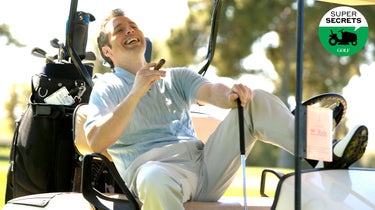Why do golf courses aerate peak-condition greens? Hint: Not to annoy you
Like death and taxes, green aerification is a certainty of life. The difference is there’s no mystery around it. Here’s why courses do it.
The post Why do golf courses aerate peak-condition greens? Hint: Not to annoy you appeared first on Golf.
Like death and taxes, green aerification is a certainty of life. The difference is there’s no mystery around it. Here’s why courses do it.
The post Why do golf courses aerate peak-condition greens? Hint: Not to annoy you appeared first on Golf.
Along with death and taxes, aerified greens are a certainty of life.
Golfers don’t love them.
Superintendents get no special pleasure from them either.
But aerifying is a crucial practice. What makes it so important? And why does it often seem to happen when greens appear to be at their best?
Brady Finton is the superintendent of Tulsa (Okla.) Country Club and a longtime member of the Golf Course Superintendents Association of America.
We asked him about the why’s and when’s of the aerification, and whether the rest of us should practice it at home.
Taking action on compaction
“Grass is just like you and me,” Finton says. It needs to eat, drink and breathe, all of which are hard when the soil beneath it gets compacted. Aerification is a vital antidote to compaction, relieving the pressure of all the foot traffic greens receive.
Getting rid of thatch
Thatch is dead organic matter. Over time, it builds up on the surface of the soil, forming a suffocating layer. Punching and topdressing help get rid of thatch while opening passageways into the root zone that allow for the healthy movement of air and moisture, improving drainage and promoting smoother, more consistent conditions.
Timing it right
Aerfication schedules vary from one course to another, and can hinge on a range of factors, including weather conditions, turf varietals and maintenance staffing. You may have noticed that it often seems to happen in peak season, when the greens are running at their best. That’s not because superintendents want to annoy you. It’s because aerification is like a surgical procedure: It involves trauma and recovery. The healthier the body, the faster it heals. If you aerify when turf isn’t growing robustly, it takes longer for it to return to tip-top shape.
Adding sand
We’d all rather putt on grass than sand. But that irksome sandy layer serves a purpose. It helps smooth out the turf while improving air flow and drainage. It also helps those holes in the greens heal more quickly
Aerifying at home
At Tulsa Country Club, Finton takes regular soil samples to help dial in his aerification schedule. The average homeowner isn’t likely to take that step. Still, Finton says, if you’ve got the time, energy and inclination, aerifying your yard is a great idea. How often you should do it depends in part on how much wear and tear your grass receiving. But paying attention to your local course can help you rough out a schedule. If they’re punching where you play, you probably can’t go wrong doing the same at home.
The post Why do golf courses aerate peak-condition greens? Hint: Not to annoy you appeared first on Golf.



